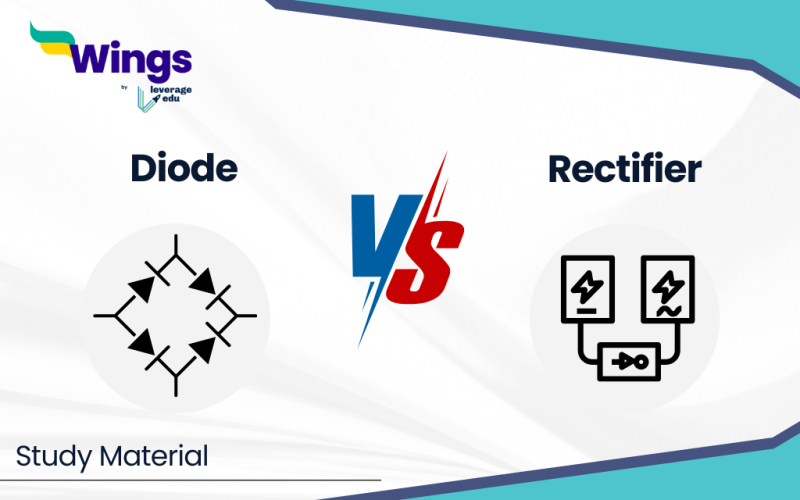The main difference between a Diode and a Rectifier is that a diode controls the direction of electrical current, while a rectifier converts alternating current (AC) to direct current (DC).
In this blog, we have given detailed information about the difference between a Diode and a Rectifier.
Table of Contents
What is a Diode?
A diode is a tiny electronic component with a big job in the world of electronics. It acts like a one-way street for electricity, allowing it to flow in only one direction while blocking it in the other.
Diodes are essential for various electronic applications, from powering your phone to lighting up LED bulbs. They’re like electrical gatekeepers, ensuring a smooth and efficient flow of electricity in electronic circuits.
Also Read: What is the Difference Between Regulated and Unregulated Power Supply?
What is Rectifier?
A rectifier is a device or circuit that converts alternating current (AC) into direct current (DC). In simpler terms, it’s like a converter that changes the flow of electricity from a back-and-forth motion to a one-way flow.
Rectifiers come in different types, such as half-wave rectifiers, full-wave rectifiers, and bridge rectifiers, each with its method of converting AC to DC. Regardless of the type, the primary function of a rectifier is to ensure a steady and continuous flow of DC electricity, enabling electronic devices to function smoothly.
What is the Difference Between a Diode and a Rectifier?
Here’s the tabular representation of the basic difference between a Diode and a Rectifier;
| Factors | Diode | Rectifier |
| Function | Controls the flow of electricity in one direction. | Converts alternating current (AC) to direct current (DC). |
| Purpose | Used in various electronic circuits for signal processing, voltage regulation, and power conversion. | Specifically designed to convert AC power sources into DC for electronic devices. |
| Flow Control | Allows current to flow in one direction while blocking it in the other. | Changes the flow of electricity from AC (back-and-forth) to DC (one-way). |
Applications of a Diode and a Rectifier
Here are some of the applications of a diode and a rectifier in real life:
- Signal rectification in radios, televisions, and communication devices.
- Voltage regulation in power supplies for electronics.
- Converting alternating current (AC) to direct current (DC) in power supplies for electronic devices.
- Charging batteries from AC power sources in battery chargers.
- Providing power for electronic appliances requiring DC voltage, such as laptops, phones, and TVs.
Also Read: What is the Difference Between a Capacitor and a Condenser?
RELATED POSTS
FAQs
The basic difference between a diode and a rectifier is that the diode controls the direction of electrical current and the rectifier converts the electric current.
The most common function of a diode is to allow an electric current to pass in one direction.
The rectifier is an electrical device used to convert alternating current (AC) into direct current (DC)
This was all about the “Difference between a Diode and Rectifier”. For more such informative blogs, check out our Study Material Section, you can learn more about us by visiting our Indian exams page.
 One app for all your study abroad needs
One app for all your study abroad needs













